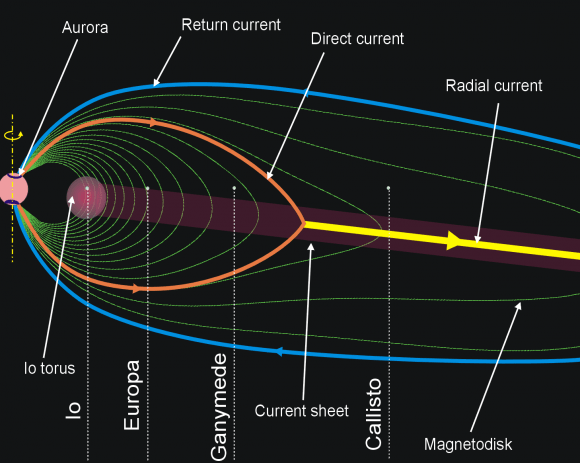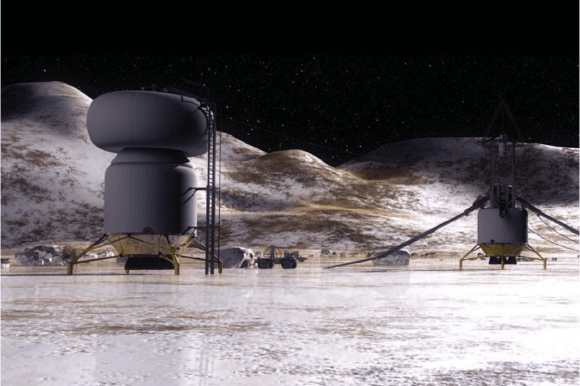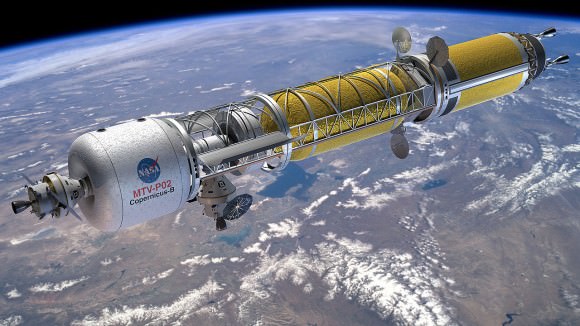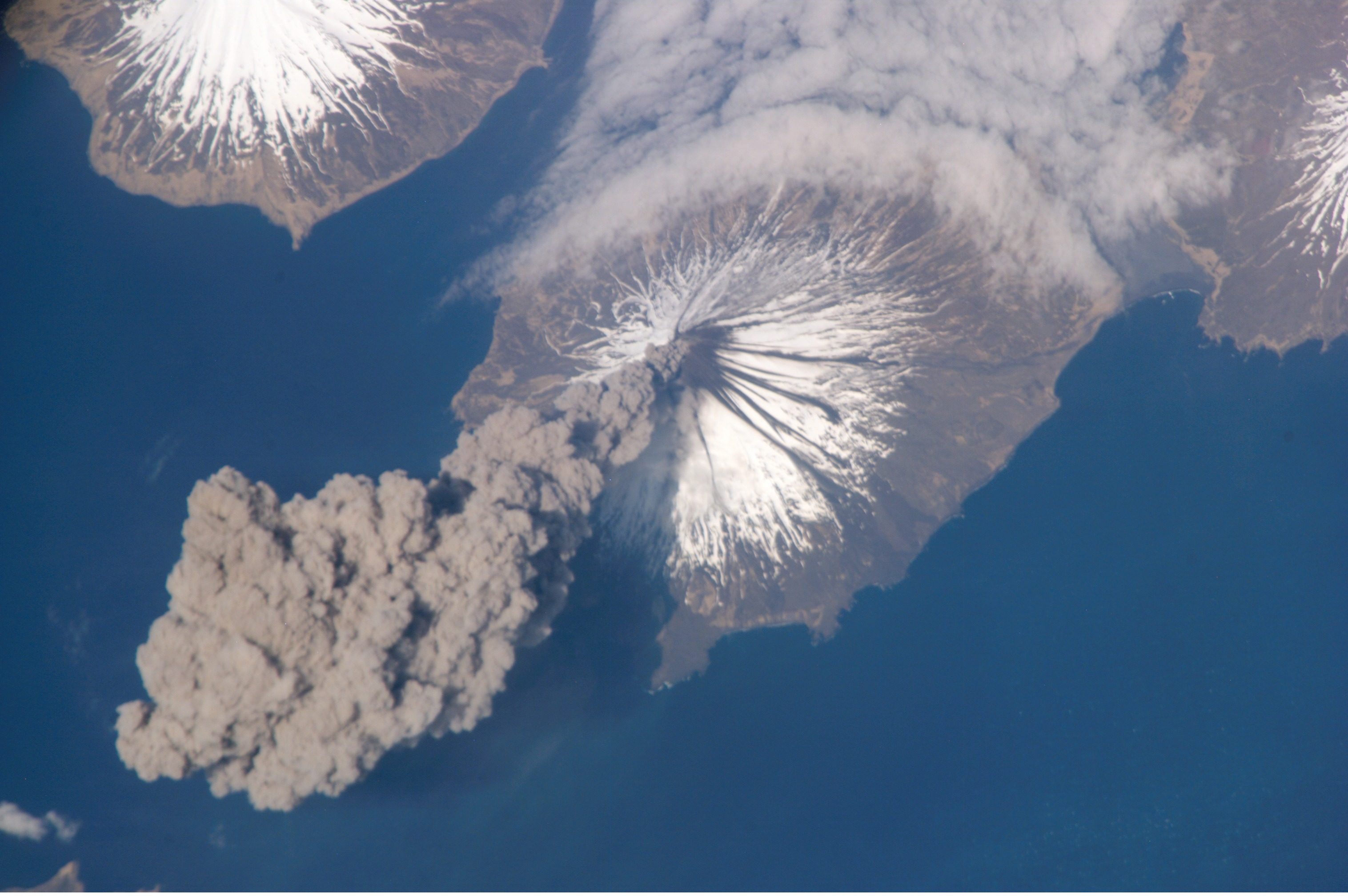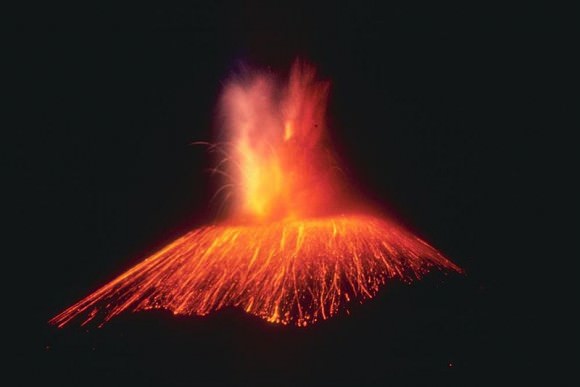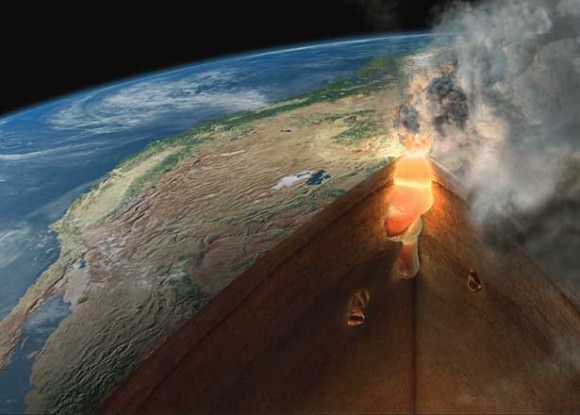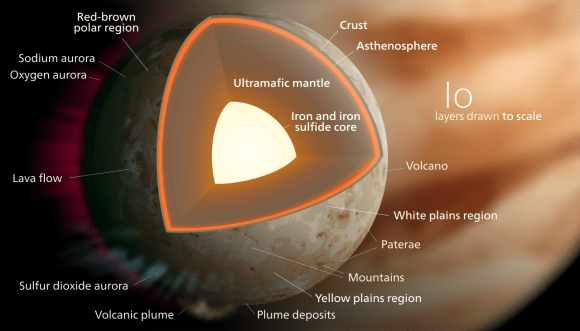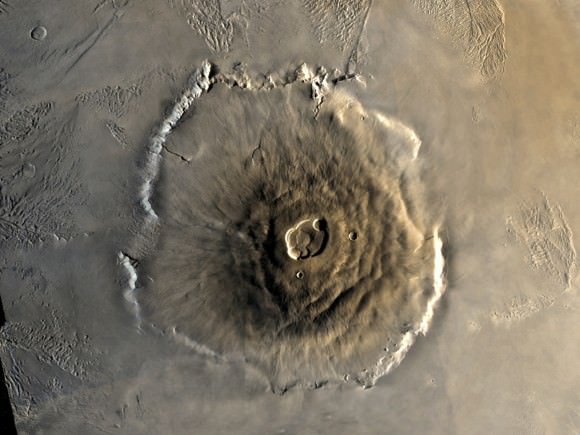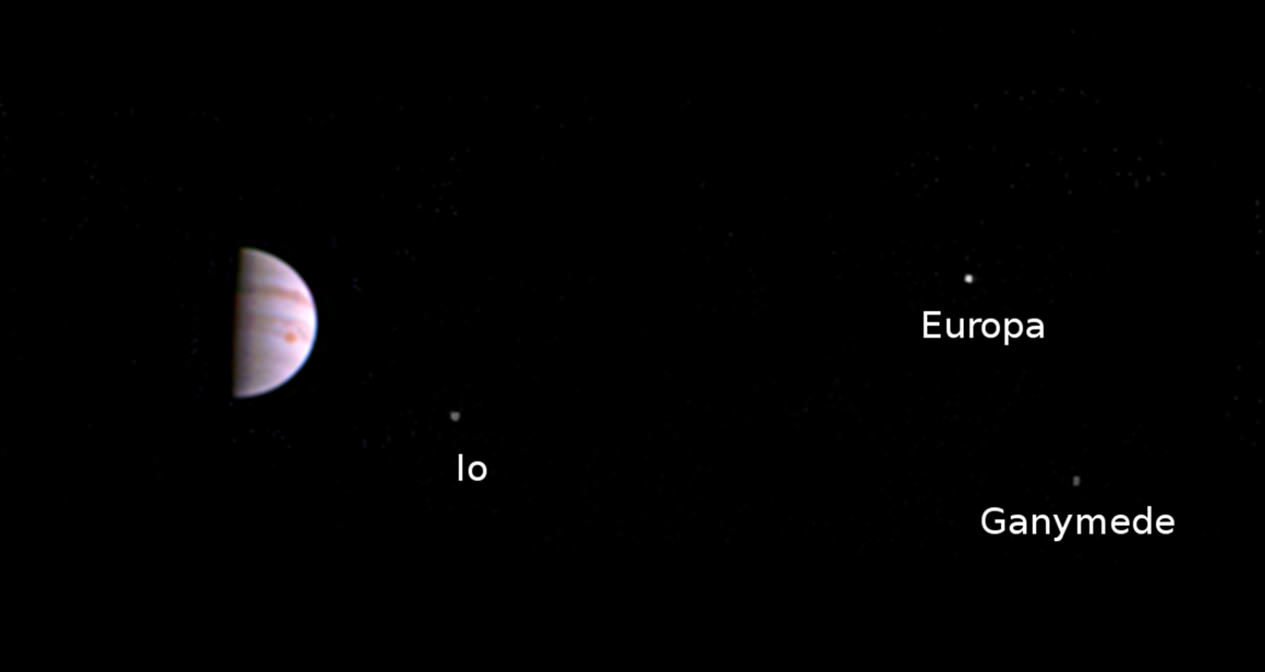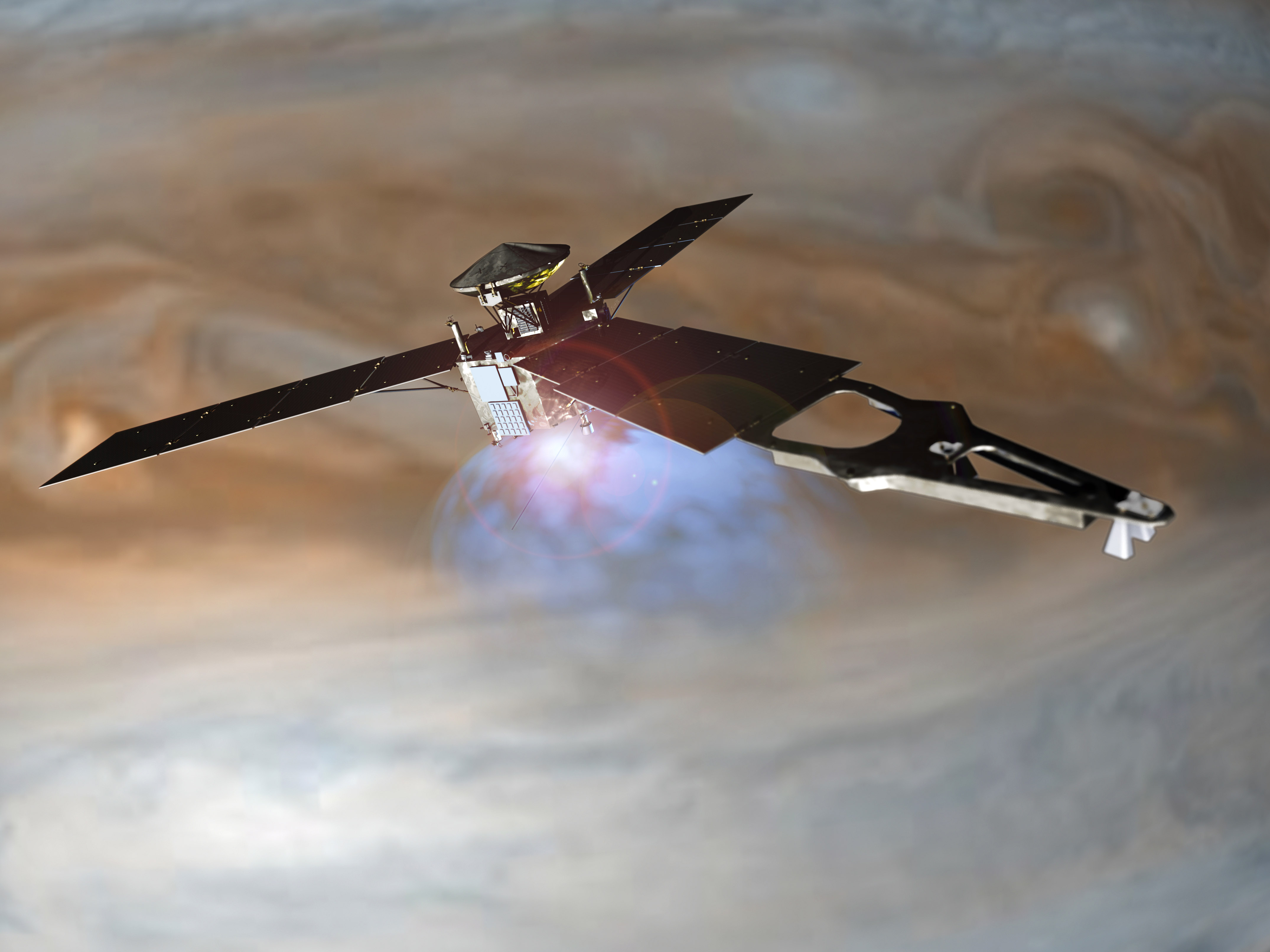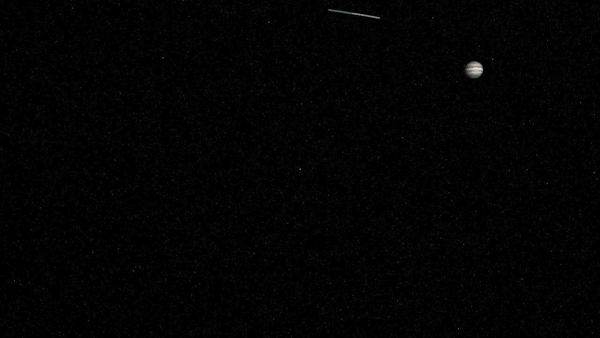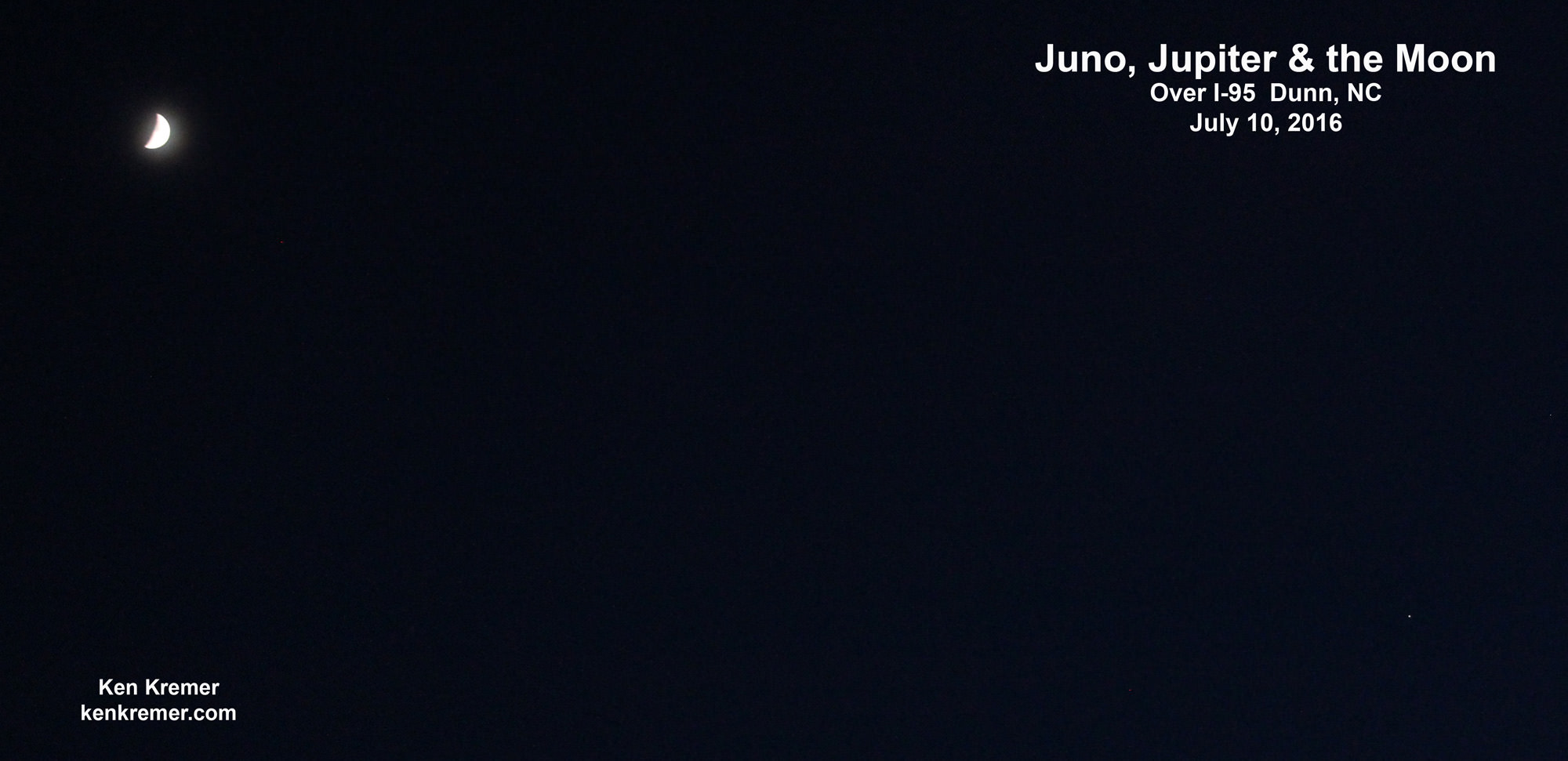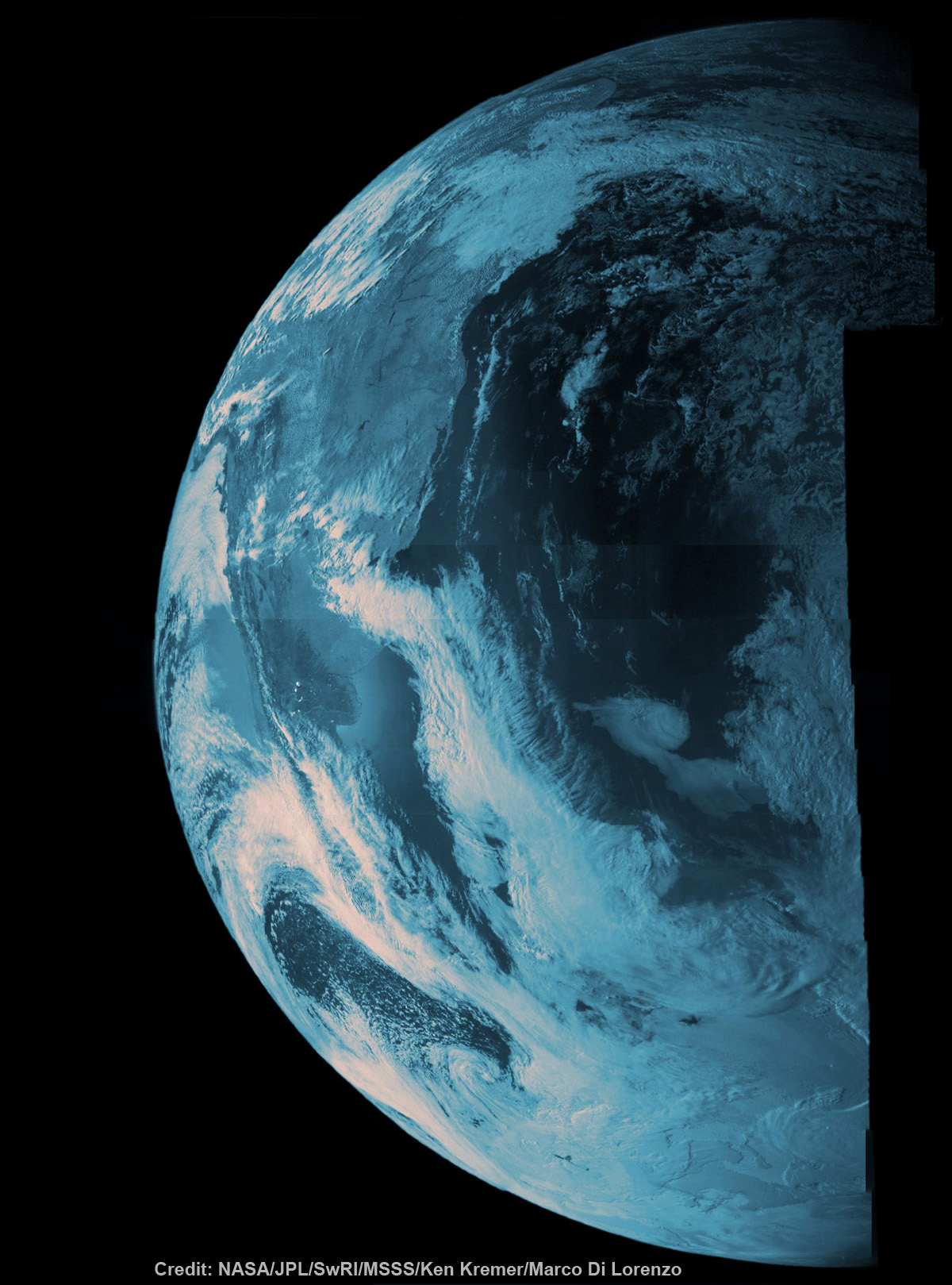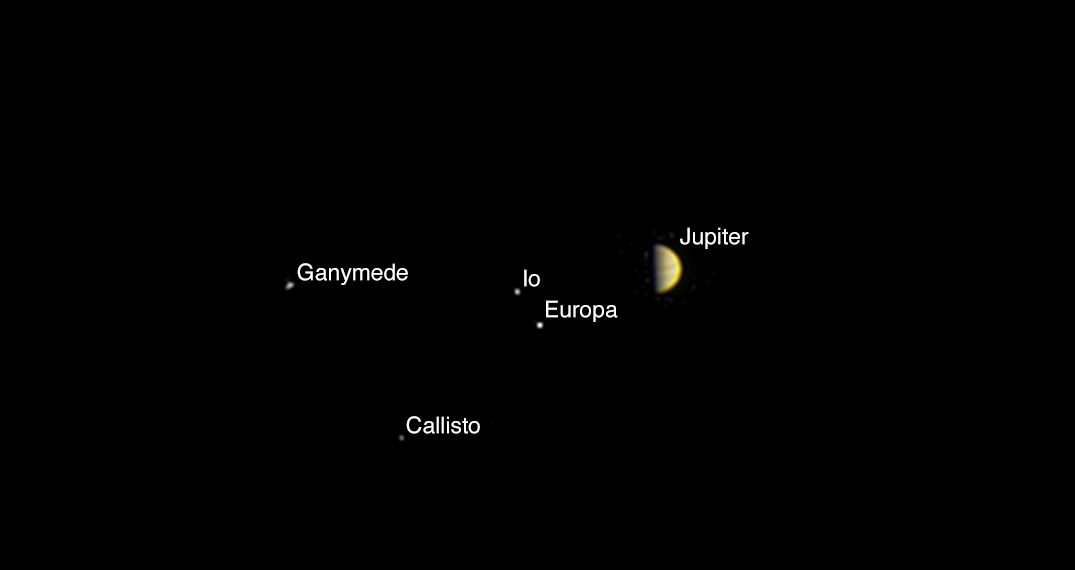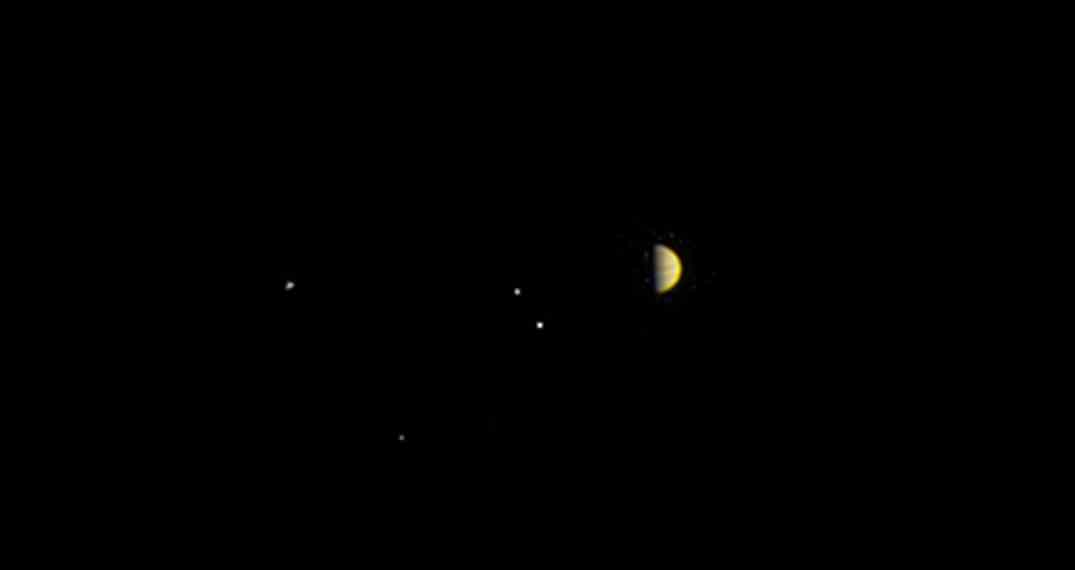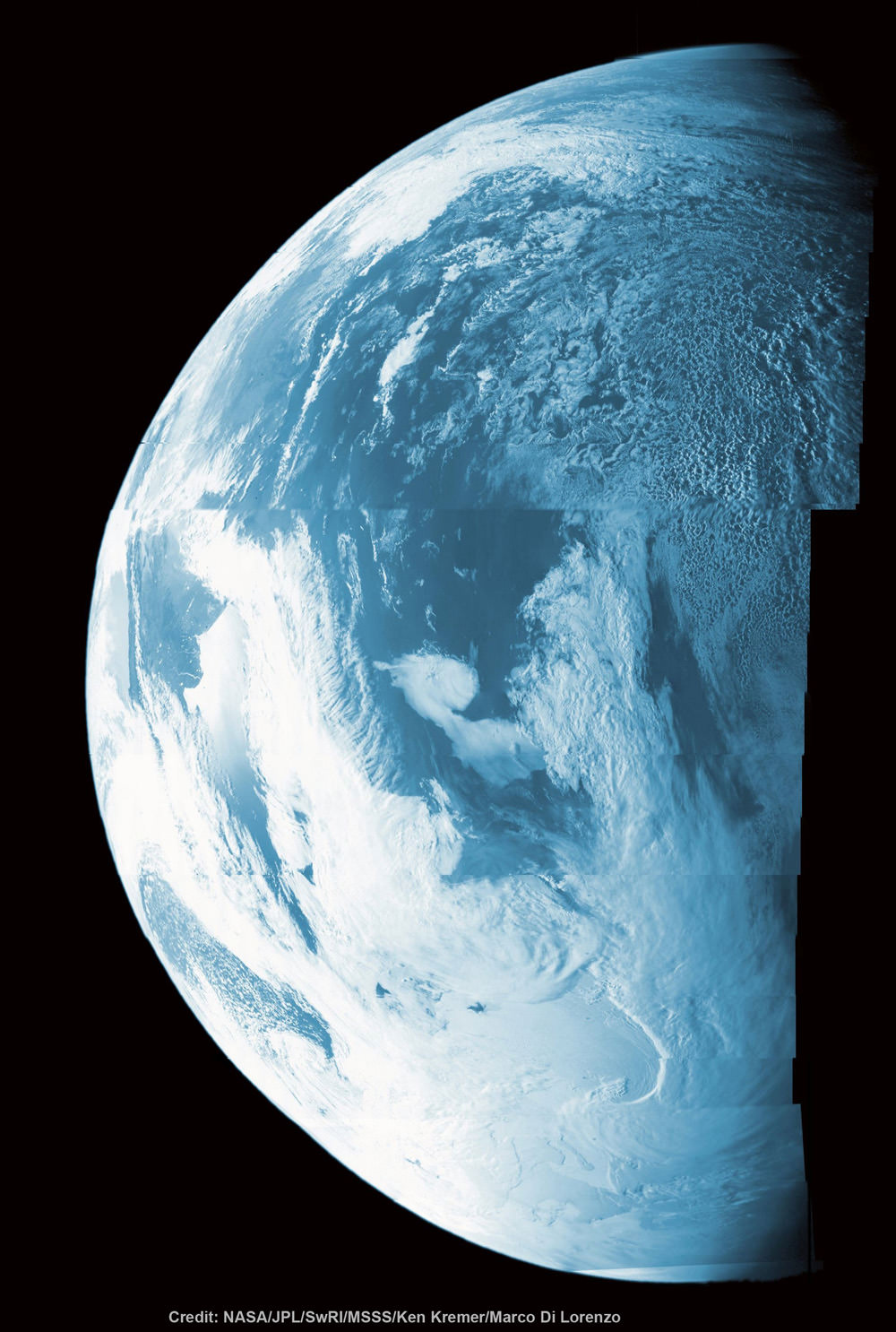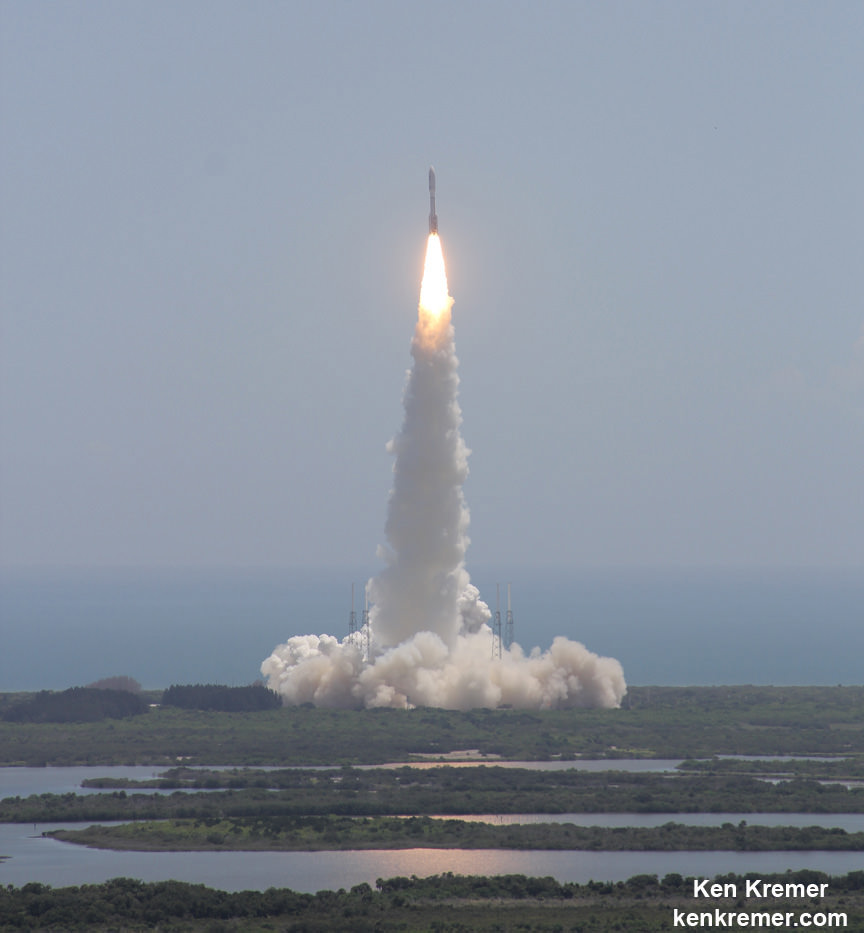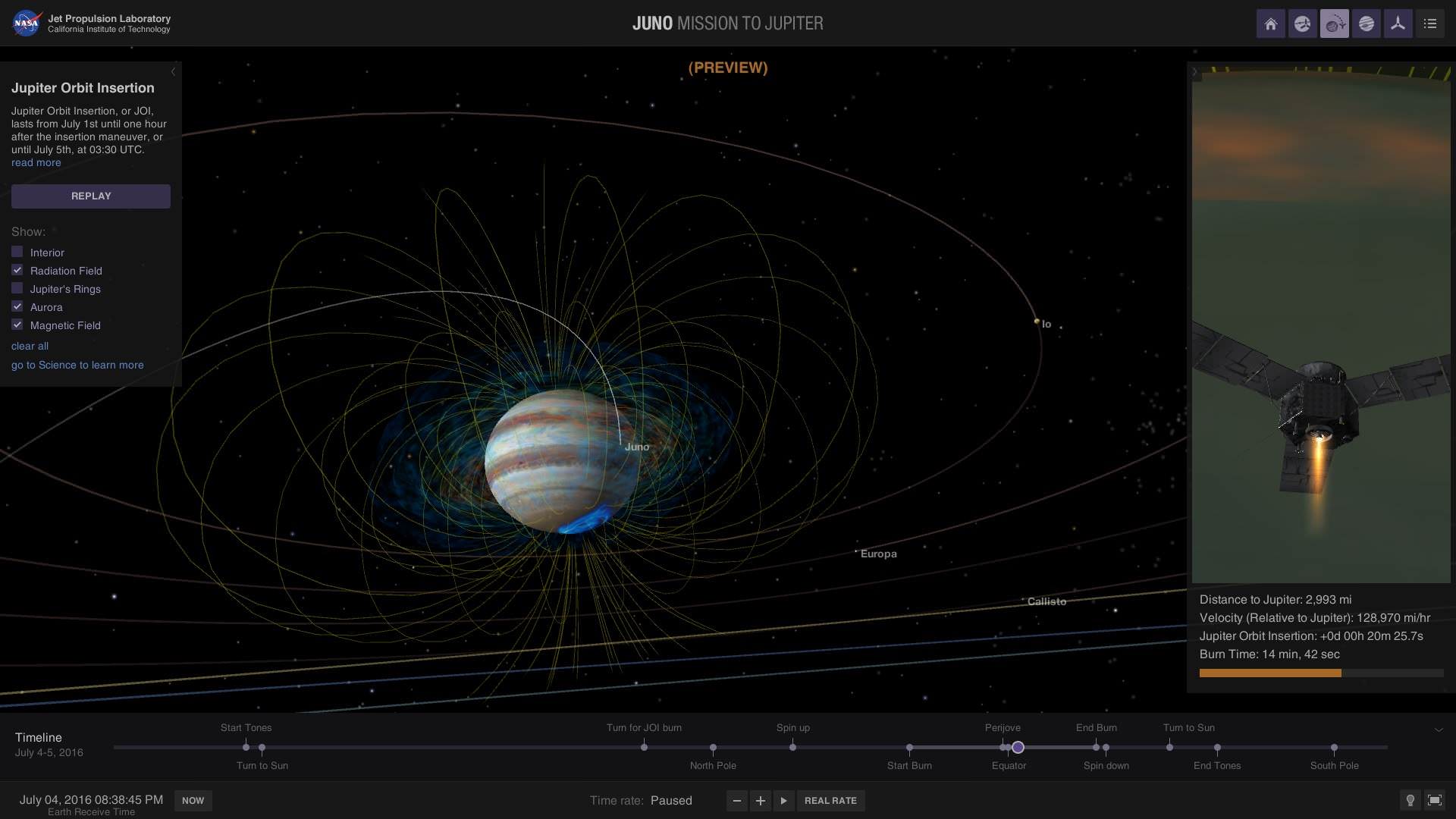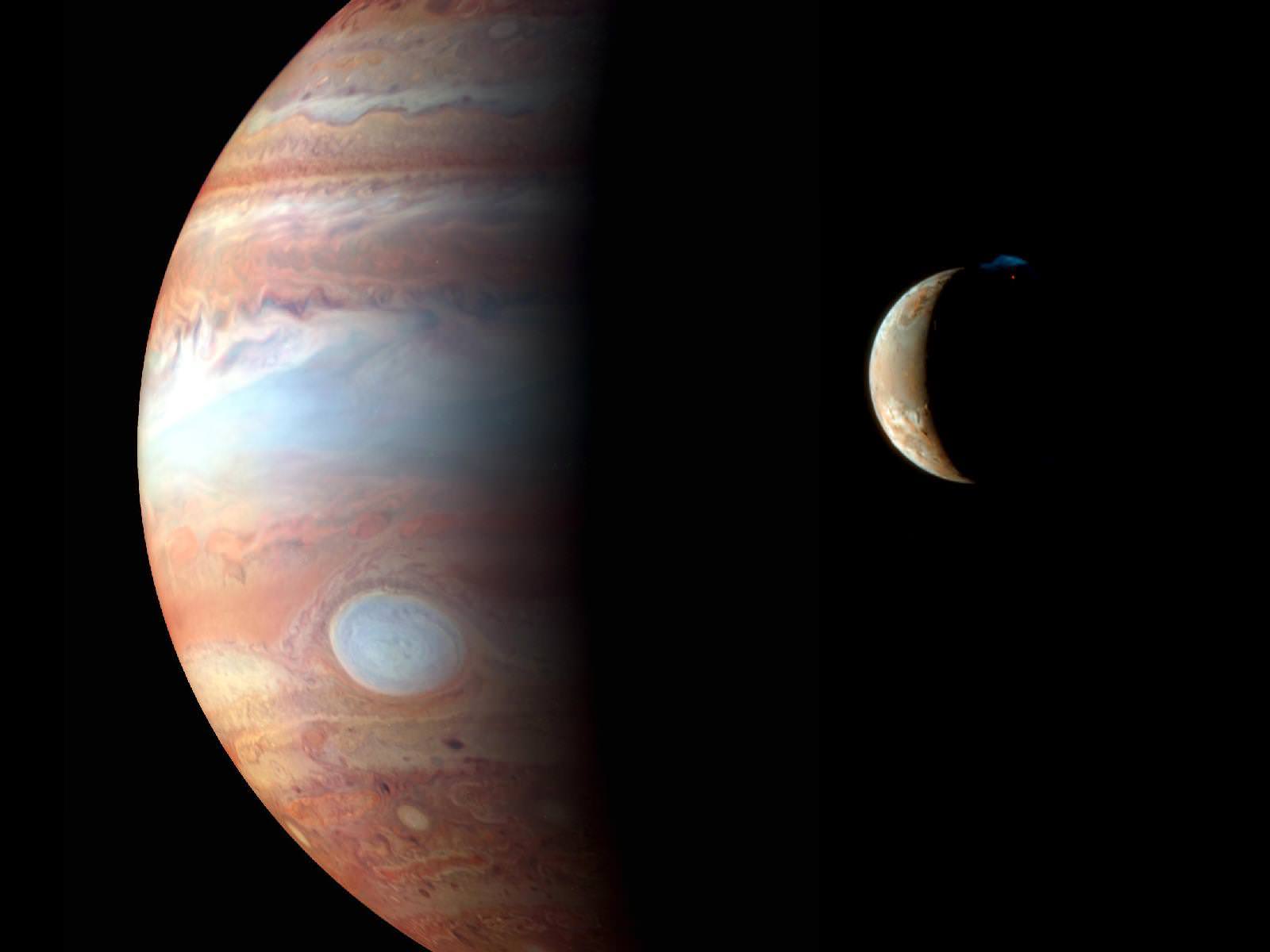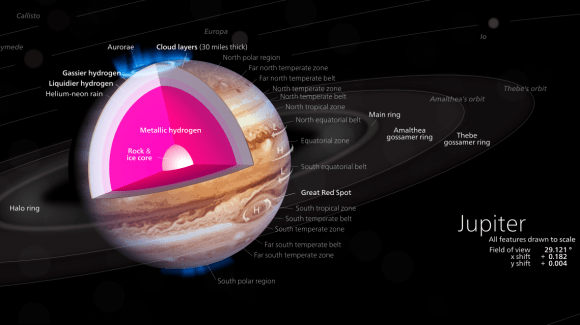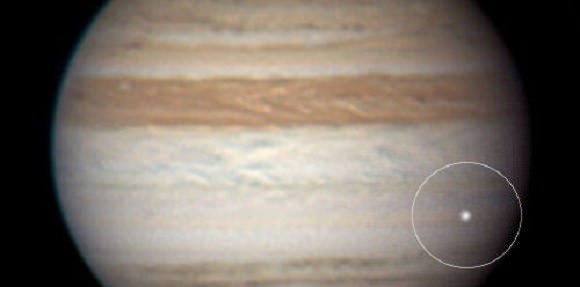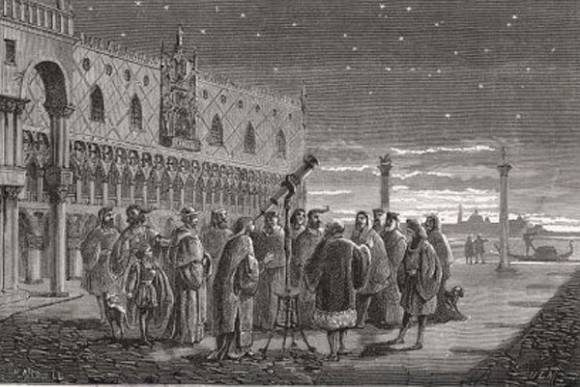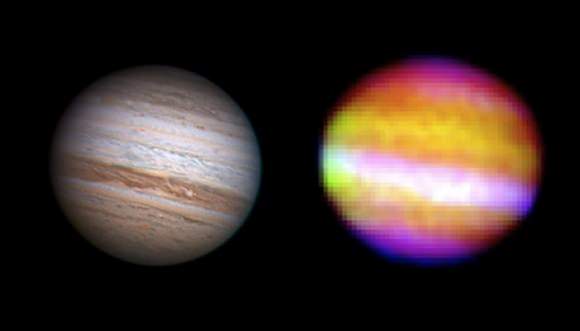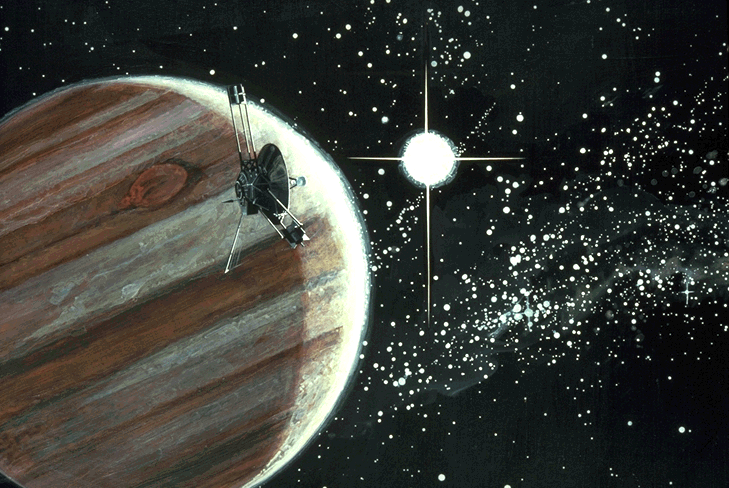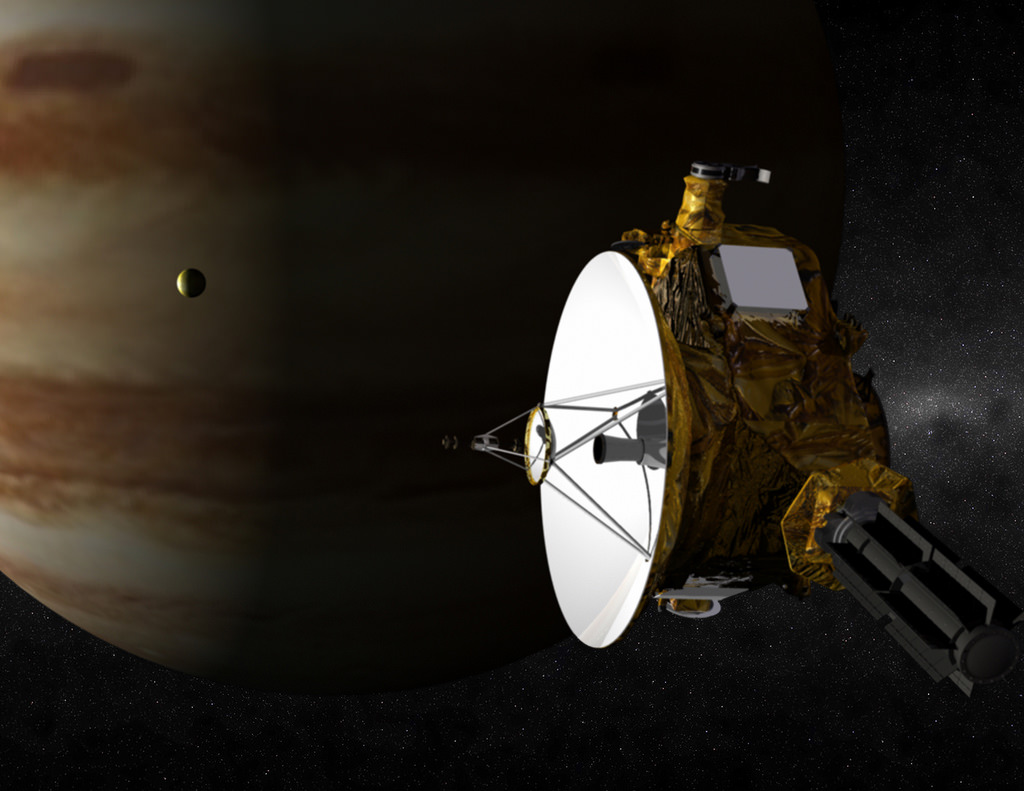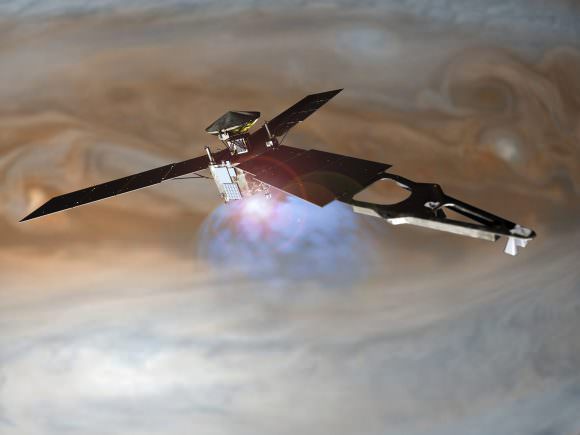Welcome back to our series on Settling the Solar System! Today, we take a look at the largest of the Jovian Moons – Io, Europa, Ganymede and Callisto!
In 1610, Galileo Galilei became the first astronomer to discover the large moons of Jupiter, using a telescope of his own design. As time passed, these moons – Io, Europa, Ganymede, and Callisto – would collectively come to be referred to as the Galilean Moons, in honor of their discoverer. And with the birth of space exploration, what we’ve come to know about these satellites has fascinated and inspired us.
For example, ever since the Pioneer and Voyager probes passed through the system decades ago, scientists have suspected that moons like Europa might be our best bet for finding life in our Solar System beyond Earth. And because of the presence of water ice, interior oceans, minerals, and organic molecules, it has been speculated that humanity might establish colonies on one or more of these worlds someday.
Examples in Fiction:
The concept of a colonized Jovian system is featured in many science fiction publications. For instance, Robert A. Heinlein’s novel Farmer in the Sky (1953) centers on a teenage boy and his family moving to Ganymede. The moon is in the process of being terraformed in the story, and farmers are being recruited to help turn it into an agricultural colony.
In the course of the story, it is mentioned that there are also efforts to introduce an atmosphere on Callisto. Many of his Heinlein’s other novels include passing mentions of a colony on Ganymede, including The Rolling Stones (1952), Double Star (1956), I Will Fear No Evil (1970), and the posthumously-written Variable Star (2006).
In 1954, Poul Anderson published a novella titled The Snows of Ganymede (1954). In this story, a party of terraformers visits a settlement on Ganymede called X, which was established two centuries earlier by a group of American religious fanatics.
In Arthur C. Clarke’s Space Odyssey series, the moon of Europa plays a central role. In 2010: Odyssey Two (1982) an ancient race of advanced aliens are turning the moon into a habitable body by converting Jupiter into a second sun. The warmth of this dwarf star (Lucifer) causes the surface ice on Europa to melt, and the life forms that are evolving underneath are able to emerge.
In 2061: Odyssey Three, Clarke also mentions how Lucifer’s warmth has caused Ganymede’s surface to partially sublimate, creating a large equatorial lake. Isaac Asimov also used the moons of Jupiter in his stories. In the short stories “Not Final!” (1941) and “Victory ‘Unintentional'” (1942), a conflict arises between humans living on Ganymede and the inhabitants of Jupiter.
In Philip K. Dick’s short-story The Mold of Yancy (1955), Callisto is home to a colony where the people conform to the dictates of Yancy, a public commentator who speaks to them via public broadcasts. In Bruce Sterling’s Schismatrix (1985), Europa is inhabited by a faction of genetically-engineered posthumans that are vying for control of the Solar System.
Alastair Reynolds’s short story “A Spy in Europa” depicts colonies built on the underside of Europa’s icy surface. Meanwhile, a race of genetically-altered humans (called the “Denizens”) are created to live in the subsurface ocean, close to the core-mantle boundary where hydrothermal vents keep the water warm and the native life forms live.
Kim Stanley Robinson’s novels Galileo’s Dream (2009) and 2312 (2012) feature colonies on Io, where settlements are adapted to deal with the volcanically active, hostile surface. The former novel is partly set on Callisto, where a massive city called Valhalla is built around the concentric rings of the moon’s giant crater (also mentioned in 2312).
In Robinson’s The Memory of Whiteness (1985), the protagonists visit Europa, which hosts large human colonies who live around pools of melted ice. And in his novel Blue Mars (1996), Robinson makes a passing description of a flourishing colony on Callisto.
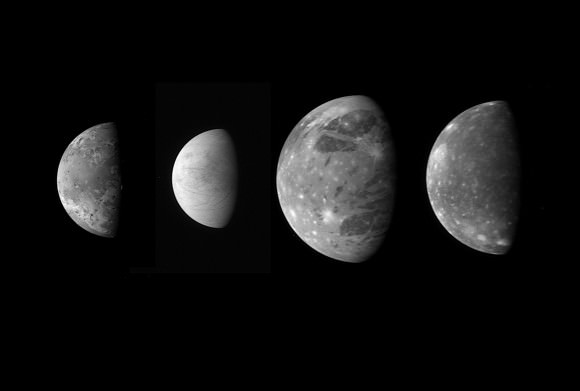
Proposed Methods:
Since the Voyager probes passed through the Jovian system, several proposals have been made for crewed missions to Jupiter’s moons and even the creation of settlements. For instance, in 1994, the private spaceflight venture known as the Artemis Project was established with the intent of colonizing the Moon in the 21st century.
However, in 1997, they also drafted plans to colonize Europa, which called for igloos to be established on the surface. These would serve as based for scientists who then drill down into the Europan ice crust and explore the sub-surface ocean. This plan also discussed the possible use of “air pockets” in the ice sheet for long-term human habitation.
In 2003, NASA produced a study called Revolutionary Concepts for Human Outer Planet Exploration (HOPE) which addressed future exploration of the Solar System. Because of its distance from Jupiter, and therefore low exposure to radiation, the target destination in this study was the moon Callisto.
The plan called for operations to begin in 2045. These would begin with the creation of a base on Callisto, where science teams would be able to teleoperate a robotic submarine that would be used to explore Europa’s internal ocean. These science teams would also excavate surface samples near their landing site on Callisto.
Last, but not least, the expedition to Callisto would establish a reusable surface habitat where water ice could be harvested and converted into rocket fuel. This base could therefore serve as a resupply base for all future exploitation missions in the Jovian system.
Also in 2003, NASA reported that a manned mission to Callisto might be possible in the 2040s. According to a joint-study released by the Glenn Research Center and the Ohio Aerospace Institute, this mission would rely on a ship equipped with Nuclear-Electric Propulsion (NEP) and artificial gravity, which would transport a crew on a 5-year mission to Callisto to establish a base.
In his book Entering Space: Creating a Spacefaring Civilization (1999), Robert Zubrin advocated mining the atmospheres of the outer planets – including Jupiter – to obtain Helium-3 fuel. A base on one or more of the Galilean moons would be necessary for this. NASA has also speculated on this, citing how it could yield limitless supplies of fuel for fusion reactors here on Earth and anywhere else in the Solar System where colonies exist.
In the 2000s, the Lifeboat Foundation – a non-profit organization dedicated to the preservation of humanity – was established. In 2012, they released a study titled “Colonizing Jupiter’s Moons: An Assessment of Our Options and Alternatives“, which considered the colonization of the Galilean moons as a potential alternative to colonies on the Moon or Mars.
In October of 2012, Elon Musk unveiled his concept for an Mars Colonial Transporter (MCT), which was central to his long-term goal of colonizing Mars. At the time, Musk stated that the first unmanned flight of the Mars transport spacecraft would take place in 2022, followed by the first manned MCT mission departing in 2024.
In September 2016, during the 2016 International Astronautical Congress, Musk revealed further details of his plan, which included the design for an Interplanetary Transport System (ITS) and estimated costs. This system, which was originally intended to transport settlers to Mars, had evolved in its role to transport human beings to more distant locations in the Solar System – including Europa and other Jovian moons.
Potential Benefits:
Establishing colonies on the Galilean moons has many potential benefits for humanity. For one, the Jovian system is incredibly rich in terms of volatiles – which include water, carbon dioxide, and ammonia ices – as well as organic molecules. In addition, it is believed that Jupiter’s moons also contain massive amounts of liquid water.
For example, volume estimates placed on Europa’s interior ocean suggest that it may contain as much as 3 × 1018 m3 – three quadrillion cubic kilometers, or 719.7 trillion cubic miles – of water. This is slightly more than twice the combined volume of all of Earth’s oceans. In addition, colonies on the moons of Jupiter could enable missions to Jupiter itself, where hydrogen and helium-3 could be harvested as nuclear fuel.
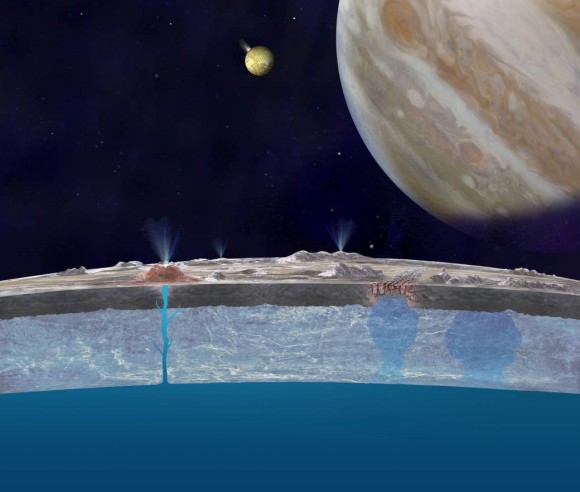
Colonies established on Europa and Ganymede would also allow for multiple exploration missions to be mounted to the interior oceans that these moons are believed to have. Given that these oceans are also thought to be some of the most likely locations for extra-terrestrial life in our Solar System, the ability to examine them up close would be a boon for scientific research.
Colonies on the moons of Io, Europa, Ganymede, and Callisto would also facilitate missions farther out into the Solar System. These colonies could serve as stopover points and resupply bases for missions heading to and from the Cronian system (Saturn’s system of moons) where additional resources could be harvested.
In short, colonies in the Jovian system would provide humanity with access to abundant resources and immense research opportunities. The chance to grow as a species, and become a post-scarcity one at that, are there; assuming that all the challenges can be overcome.
Challenges:
And of course, these challenges are great in size and many in number. They include, but are not limited to, radiation, the long-term effects of lower gravity, transportation issues, lack of infrastructure, and of course, the sheer cost involved. Considering the hazard radiation poses to exploration, it is appropriate to deal with this aspect first.
Io and Europa, being the closest Galileans to Jupiter, receive the most radiation of any of these moons. This is made worse by the fact that neither have a protective magnetic field and very tenuous atmospheres. As such, Io’s surface receives an average of about 3,600 rems per day, while Europa receives about 540 per day.
For comparison, people here on Earth are exposed to less than 1 rem a day (0.62 for those living in developed nations). Exposure to 500 rems a day is likely to be fatal, and exposure to roughly 75 in a period of a few days is enough to cause severe health problems and radiation poisoning.
Ganymede is the only Galilean moon (and only non-gas giant body other than Earth) to have a magnetosphere. However, it is still overpowered by Jupiter’s powerful magnetic field. On average, the moon receives about 8 rads of radiation per day, which is the equivalent of what the surface of Mars is exposed to in an average year.
Only Callisto is far enough from Jupiter that it is not dominated by its magnetic environment. Here, radiation levels only reach about 0.01 rems per day, just a fraction of what we are exposed to here on Earth. However, its distance from Jupiter means that it experiences its fair share of problems as well (not the least of which is a lack of tidal heating in its interior).
Another major issue is the long-term effects the lower gravity on these moons would have on human health. On the Galilean moons, the surface gravity ranges from 0.126 g (for Callisto ) to 0.183 g (for Io). This is comparable to the Moon (0.1654 g), but substantially less than Mars (0.376 g). And while the effects of low-g are not well-understood, it is known that the long-term effect of microgravity include loss of bone density and muscle degeneration.
Compared to other potential locations for colonization, the Jovian system is also very far from Earth. As such, transporting crews and all the heavy equipment necessary to build a colony would be very time-consuming, as would missions where resources were being transported to and from the Jovian moons.
To give you a sense of how long it would take, let’s consider some actual missions to Jupiter. The first spacecraft to travel from Earth to Jupiter was NASA’s Pioneer 10 probe, which launched on March 3rd, 1972, and reached the Jupiter system on December 3, 1973 – 640 days (1.75 or years) of flight time.
Pioneer 11 made the trip in 606 days, but like its predecessor, it was simply passing through the system on its way to the Outer planets. Similarly, the Voyager 1 and 2 probes, which were also passing through the system, took 546 days and 688 days, respectively. For direct missions, like the Galileo probe and the recent Juno mission, the travel time was even longer.
In the case of Galileo, the probe left Earth on October 18th, 1989, and arrived at Jupiter on December 7th, 1995. In other words, it took 6 years, 1 month, and 19 days to make it to Jupiter from Earth without flying by. Juno, on the other hand, launched from Earth on Aug. 5th, 2011, and achieved orbit around Jupiter on July 5th, 2016 – 1796 days, or just under 5 years.
And, it should be noted, these were uncrewed missions, which involved only a robotic probe and not a vessel large enough to accommodate large crews, supplies and heavy equipment. As a result, colony ships would have to be much larger and heavier, and would require advanced propulsion systems – like nuclear-thermal/nuclear-electric engines – to ensure they made the trip in a reasonable amount of time.
Missions to and from the Jovian moons would also require bases between Earth and Jupiter in order to provide refueling and resupplying, and cut down on the costs of individual missions. This would mean that permanent outposts would need to be established on the Moon, Mars, and most likely in the Asteroid Belt before any missions to Jupiter’s moons were considered feasible or cost-effective.
These last two challenges raise the issue of cost. Between building ships that have the ability to make the trip to Jupiter in a fair amount of time, established the bases needed to support them, and the cost of establishing the colonies themselves, the colonization of the Jovian moons would be incredibly expensive! Combined with the hazards of doing so, one has to wonder if its even worth it.
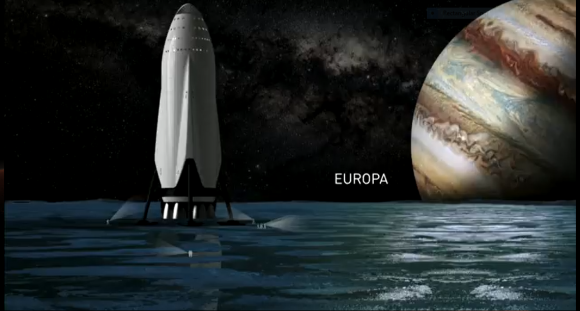
On the other hand, in the context of space exploration and colonization, the idea of establishing permanent human outposts on Jupiter’s moons makes sense. All of the challenges can be addressed, provided the proper precautions are taken and the right kind of resources are committed. And while it will have to wait until after similar colonies/bases are established on the Moon and Mars, it is not a bad idea as far as “next steps” go.
With colonies on any of the Galilean moons, humanity will have a foothold in the outer Solar System, a stopover point for future missions to Saturn and beyond, and access to abundant resources. Again, it all comes down to how much we are willing to spend.
We have written many interesting articles on colonization here at Universe Today. Here’s Why Colonize the Moon First?, How Do We Colonize Mercury?, How Do We Colonize Venus?, Colonizing Venus with Floating Cities, Will We Ever Colonize Mars?, and The Definitive Guide to Terraforming.
Astronomy Cast also has some interesting episodes on the subject. Check out Episode 95: Humans to Mars, Part 2 – Colonists, Episode 115: The Moon, Part 3 – Return to the Moon, Episode 381: Hollowing Asteroids in Science Fiction.
Sources:



